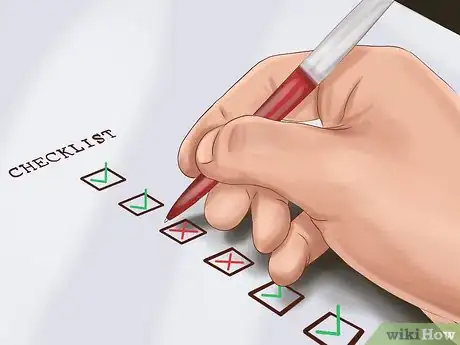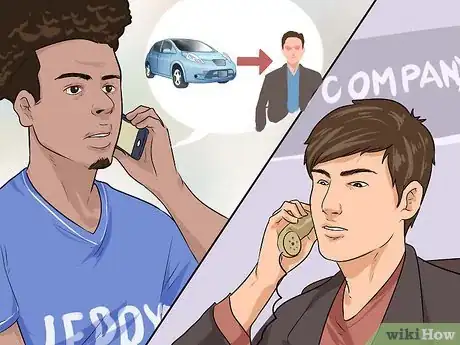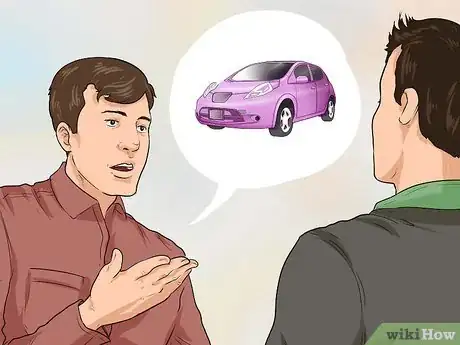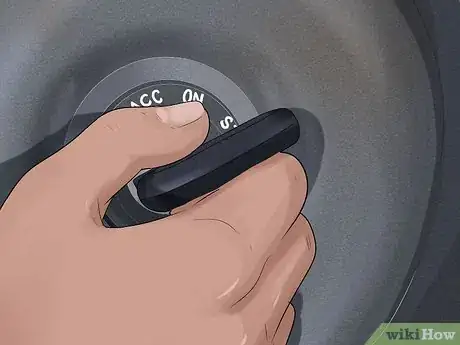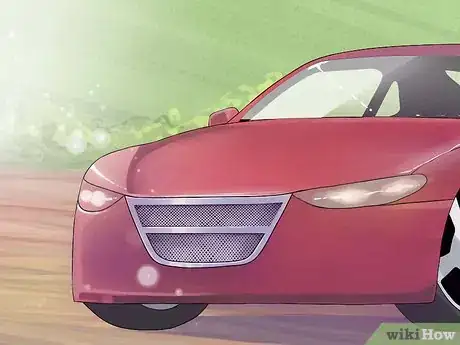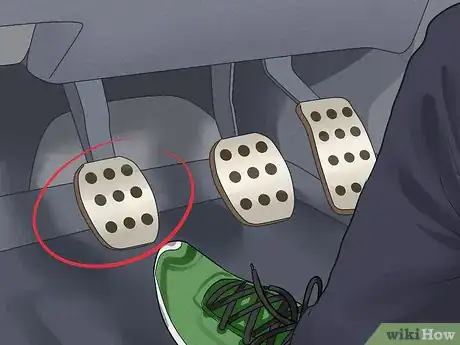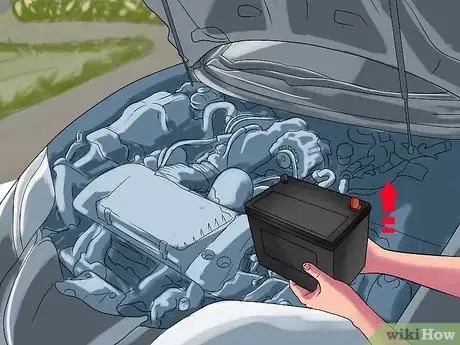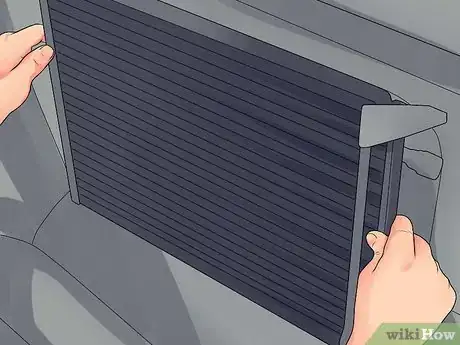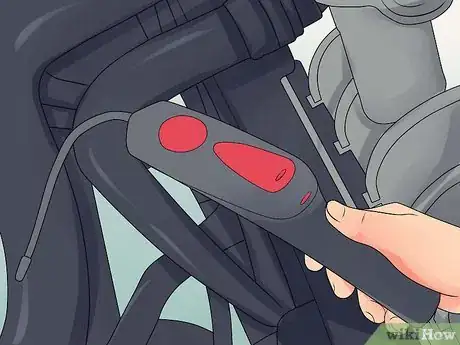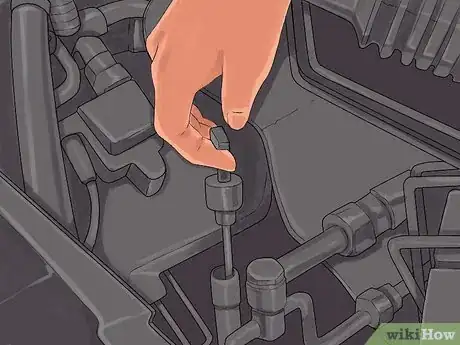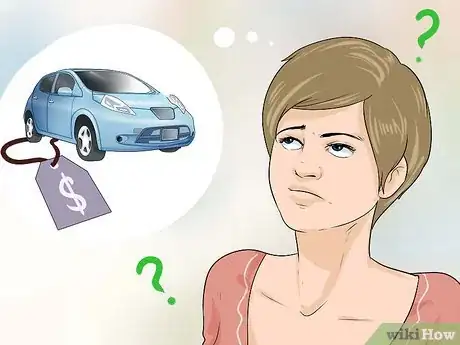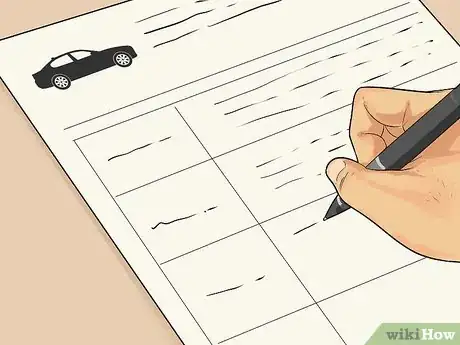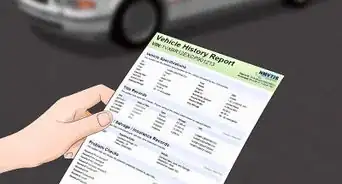This article was co-authored by Bryan Hamby. Bryan Hamby is the owner of Auto Broker Club, a trusted auto brokerage in Los Angeles, California. He founded Auto Broker Club in 2014 out of a passion for cars and a unique talent for customizing the car dealership process to be on the buyer’s side. With 1,400+ deals closed, and a 90% customer retention rate, Bryan’s focus is to simplify the car buying experience through transparency, fair pricing, and world class customer service.
There are 10 references cited in this article, which can be found at the bottom of the page.
wikiHow marks an article as reader-approved once it receives enough positive feedback. This article received 13 testimonials and 88% of readers who voted found it helpful, earning it our reader-approved status.
This article has been viewed 1,240,083 times.
Buying a car through a private seller can often save time and money for the purchaser [1] . You are able to negotiate more freely and with often a less experienced negotiator, with different incentives from a salesperson at a dealership [2] . While many buyers fear buying lemons, many car repairs can be accomplished cheaply. [3] With research and patience a private seller can often provide a great deal.
Steps
Vehicle Selection
-
1Set aside a definite budget. Private sellers expect to be paid by cash or check, in-full and upfront, and cannot provide financing. However, private sellers tend to be quite a bit cheaper than dealerships, making an all-at-once payment more beneficial. Note, however, that consumer protection laws do not apply to private sellers.[4] Check the Kelley Blue Book value of any car you are considering.
- Apply for financing through a bank if you cannot pay the total cost of the car upfront. If you do not have enough saved you should consider a personal loan from a bank. The total cost of this can vary considerably depending on your credit score. Apply for this financing before you approach a seller.
- Look up the laws in your state regarding private sales. In nearly every state, caveat emptor ("Buyer Beware") applies. Basically, this means that once the money changes hands, you have no legal recourse or warranty if things go bad, even the day after you buy the car. You'd have to get any warranty in writing, preferably on the bill of sale.[5]
-
2Consider your transportation needs. Consider whether you will haul large loads, transport groups of people, the distance you will regularly travel, as well as the terrain. Plan for everyday use, and not edge-cases to avoid searching for cars that exceed your needs. This will help you filter what kind of vehicle you are looking for.Advertisement
-
3Shortlist cars. Look through auto classifieds, online, in your local paper, and through friends and family. Online sources like Craigslist can allow you to quickly sort through and filter sellers. Sellers are competing in a saturated market, so be discriminating in which ads you choose to make a response.
-
4Analyze the information in the ad. Ads that are not descriptive or detailed often indicate that the seller is being disingenuous. The more information you are able to readily verify in the ad, the better. You will also be able to compare any asking price against a market price. Once you know the car's basics, look up similar models to compare prices.
- Note that terms like "clean," and "runs great" are not legally enforceable terms, nor particularly helpful for a buyer. Focus on miles, any recent mechanical work needed, make, model, and year of the car.
Seller Communication
-
1Contact the seller at a reasonable hour. Try not to call too late in the evening or too early in the morning - the seller may not be able to talk for long and tell you about the car. The seller should be easy to reach through the contact information in the ad, if not avoid further contact, as this might be a scam.
- If you want to negotiate the price of the car, know what price you're looking for now. It might not come up yet, and likely shouldn't, but you should have this idea from your budget earlier.
- Only contact sellers if you're interested in actually buying the car. Showing and testing a used car takes time, and the seller doesn't want to hold on other offers if you're not serious.
-
2During this phone call, verify the make, model, year, mileage, VIN (vehicle identification number) and general condition of the vehicle. Any damage or wear can factor in to the price, so compare this against the asking price. Ask why the vehicle is being sold. Make a note of this information to compare later against the actual facts as they evolve.
- If the seller is unable or unwilling to give any of this information, go ahead and walk away. This is a huge red flag.
EXPERT TIPBryan Hamby is the owner of Auto Broker Club, a trusted auto brokerage in Los Angeles, California. He founded Auto Broker Club in 2014 out of a passion for cars and a unique talent for customizing the car dealership process to be on the buyer’s side. With 1,400+ deals closed, and a 90% customer retention rate, Bryan’s focus is to simplify the car buying experience through transparency, fair pricing, and world class customer service.Car Buying Expert
 Bryan Hamby
Bryan Hamby
Car Buying ExpertDo some research before you even see the vehicle. Bryan Hamby, owner of Auto Broker Club, says: "Once you know the type of car you'll be looking at, research the car to compare pricing for similar vehicles. Also, look up reviews of that car on sites like Edmunds, Kelley Blue Book, and NHTSA.gov, which will give you information on any car's safety ratings."
-
3Schedule an appointment to see the actual car and take it for a spin. The time should work for both of you and the meeting should be in a public area if you do not know the seller. You should prepare for this meeting by having all your information and questions ready. Keep the seller apprised of any changes in your schedule for the meeting.
- Only meet the seller if you can also see the car. If they just want to meet in person, they're wasting your time.
Vehicle Inspection
-
1Ask for a maintenance history for the vehicle. If you don't know a lot about auto mechanics, bring someone along with you for the best results. Private sellers may keep records of any repairs or maintenance done on the vehicle, and this will tell you the general health of the car. If they do not know the history, you'll absolutely need to do a thorough check through the DMV.
- Ask if they have made any modifications ("mods") to the car, and who did them.
- Ask, at the very least, for the mechanical history of the car since the current owner bought it.
- If they made repairs or changes themselves, it is up to you whether or not you trust them.
-
2Use the VIN to do a detailed car history search. The DMV has a record of any accidents involving the car, as does Carfax.com, so that you can do a more detailed search. Use the VIN, located on the steering column in the interior, on the engine, or etched on the windshield, to get specific car information.
- The most likely location of the VIN is on the lower left-hand corner of the windshield (looking from the driver's seat).
EXPERT TIP"Make sure the registration on the vehicle is current. Otherwise, you could be held responsible for any late fees."
Bryan Hamby is the owner of Auto Broker Club, a trusted auto brokerage in Los Angeles, California. He founded Auto Broker Club in 2014 out of a passion for cars and a unique talent for customizing the car dealership process to be on the buyer’s side. With 1,400+ deals closed, and a 90% customer retention rate, Bryan’s focus is to simplify the car buying experience through transparency, fair pricing, and world class customer service.
Bryan Hamby
Car Buying Expert Bryan Hamby
Bryan Hamby
Car Buying Expert -
3Make a thorough inspection of the vehicle, with the engine off and on. Check the body for obvious damage or signs of previous heavy repairs, the tires for any obvious defects such as cracks or under-inflation or excessive wear, and the engine for any signs of physical damage. Use a small pocket magnet to find areas where plastic putty (bondo) was used to repair body damages. A paint thickness tester with a digital display will help to detect clunkers. Be aware of the fact that private sellers are not prevented in any way from selling damaged cars, and can hide the origin of the car through title washing, a process of selling a car and re-registering it in a new state.
-
4Inspect the vehicle for any signs of water damage. Mineral deposits, discoloration, water stains on the interior, strong odor from cleaners, or deposited flotsam are all sure indicators of water damage. Any water damage to the engine or interior of the car is likely to leave the car totaled.
-
5Inspect the car for any rust or body damage. Check in the wheel wells, the rockers, the floorboards, and trunk. Repairing or reversing rust is an expensive process. Indicators of shoddy bodywork include mismatched paint, use of plastic or fiberglass filler, or gaps between body panels.
-
6Examine the mileage on the vehicle. The odometer is generally reliable, but wear on seat upholstery and the pedals are sure indicators of use as well. You should be alert when you find new pedal rubbers! The Kelley Blue Book offers a calculator for the price impact of mileage. Have this calculator handy. [6]
- Note, however, that Kelly Blue Book prices will vary from zip code to zip code, so check prices in your own town, not where you buy the car.
-
7Check the tires, especially the front, for wear. If they are worn unevenly, the car may need front end repairs to the alignment, shocks, tires or tie rods. While replacing the tires can be relatively inexpensive, any obvious and significant damage would make the car unsafe to test drive.
- A new set of tires can be a potential red flag -- as this is an odd expense to pay before selling the car. Make sure you pay specific attention to braking and handling when test driving.
-
8Examine the battery. Batteries are inexpensive and easy to replace. If the terminals are corroded it is an indication of poor maintenance. Avoid test driving the car if the battery appears too corroded, it could spark or start a fire.
-
9Check the air filter. Make sure there is no oil on the air filter, or near the air intake. This could indicate blown pistons or other engine damage. If you are unsure of how to check this, have an experienced mechanic show you. Again, a brand new air filter can be a red flag, as it might be a way to cover or postpone engine failure. That said, these cheap parts are easy to replace and should be replaced often, so as long as it's not brand new without an explanation you should be fine.
-
10Examine the engine's coolant and oil levels while the car is off. The oil from the dipstick should be black and free from grit. The coolant should not have any particulate matter in it, or be sludgy or brown. This indicates serious issues with the engine that make the car unsafe and costly to repair.
- If the oil is red or green it is probably brand new. Again, if the seller is not upfront about this it can be a red flag that she/he is hiding bigger issues.
-
11Check the transmission fluid with the engine running. It should smell sweet and have little particulate matter. Burnt orange or brown fluid means it hasn't been changed in a long time. Avoid test driving the car if there are issues with the transmission, as it locking up or otherwise braking could cause an accident. This is for automatic transmissions.
- For a manual transmission, check the clutch master cylinder for leaks, etc.; and the clutch pedal; it shouldn't feel either too stiff or too loose. Does the shifter hang up or pop out of gear? Those would be considered deal enders.
-
12Check the climate control in the car. Run the heat and the air conditioning to see how well they run. The air conditioning may need coolant to improve cooling. The fan should blow without any obstruction or excessive noise.
-
13Test drive the car. Drive as you normally would, for a period of time that is sensible. This includes freeway and city driving. Keep an eye on the engine temperature, ease of steering and the ease of shifting gears, as well as the status of check engine light. You can monitor the gear shifts by observing the tachometer's rise and fall with acceleration. Many minor repairs can be accomplished relatively quickly. [7]
- Keep the stereo off so that you can listen into the car for dangerous sounds or unwelcome noises. You can test the sound system, but make it quick.
- Try to drive, if possible, at a variety of speeds and locations. Get on a nearby highway and open it up, then try to slower, more precise turning on slower roads.
Final Transaction
-
1Make sure the seller has all the necessary paperwork. Unlike with a dealership, you must handle all the required paperwork to purchase the car. You can contact your local DMV to secure any papers needed to pay sales tax, transfer the title and registration, and any other legalities involved in purchasing the car [8] . Ensure that you have established the source your financing, either through earnings or a loan, before you attempt to buy the vehicle.
- If the seller doesn't have the title in hand, walk away. Don't accept stories about it being lost or gone. Similarly, make sure you have your cash and any required paperwork ready.
-
2Have a professional mechanic inspect the car and perform any necessary tests at your expense as mechanics tend to favor the person paying for the inspection. In some states, emissions tests are required before the sale of a vehicle, and this will allow you to catch any issues you might have missed during your test drive. The seller should be receptive to this if not, walk away from the deal because this is an indication of major needed repairs.
-
3Make an offer if the car suits you. Although you may be accustomed to fixed prices, this an occasion where you often have leverage and can offer a below Blue Book valuation.[9] Negotiation is acceptable in this situation, and if you have cash on hand, you can pressure the seller to a lower price.
- Consider the incentives of the seller. The seller often is motivated to sell the car privately because of a poor offer from a dealership. The seller is generally aware of the market value of the car and generally willing to sell below that value. You can use this to your advantage in negotiating the price.[10]
EXPERT TIPBryan Hamby is the owner of Auto Broker Club, a trusted auto brokerage in Los Angeles, California. He founded Auto Broker Club in 2014 out of a passion for cars and a unique talent for customizing the car dealership process to be on the buyer’s side. With 1,400+ deals closed, and a 90% customer retention rate, Bryan’s focus is to simplify the car buying experience through transparency, fair pricing, and world class customer service.Car Buying Expert
 Bryan Hamby
Bryan Hamby
Car Buying ExpertThe seller dictates what payments they accept. According to Bryan Hamby of Auto Broker Club: "A seller might request cash, check, cashiers check, credit card, or even online payments like PayPal or Venmo. Cash is usually best, but if you're paying more than about $2000-$2500, you may want to pay with a cashier's check, or you can use an escrow service if you're buying remotely. Also, depending on where you live, you may need to pay taxes on the sale, so check with your local DMV before the purchase."
-
4Get the signed title from the seller. If your seller accepts your offer, fill out and mutually sign all the required paperwork, and make the payment. This should be sufficient to temporarily secure the title until you get the car legally registered in your name. If you are stopped by police without this under your name, the car may be considered stolen.
Community Q&A
-
QuestionWhat do I do after I sign the title?
 Community AnswerYou don't sign the title. The seller does this when you purchase from them and then you take it to the DMV to get plates.
Community AnswerYou don't sign the title. The seller does this when you purchase from them and then you take it to the DMV to get plates. -
QuestionIs there a sales tax that is to be paid?
 Community AnswerDepends on the state. In NY, for example, the sales tax is paid when the vehicle is registered at the DMV.
Community AnswerDepends on the state. In NY, for example, the sales tax is paid when the vehicle is registered at the DMV. -
QuestionWhat's a bill of sale? How do I get that?
 Community AnswerThe bill of sale is a contract outlining the details of the sales agreement. The seller should create it. There are templates available online if you're not sure how to make one.
Community AnswerThe bill of sale is a contract outlining the details of the sales agreement. The seller should create it. There are templates available online if you're not sure how to make one.
Warnings
- If you don't feel comfortable with the seller, the car, the neighborhood or anything else, walk away - you are not obligated to see, drive or buy the car.⧼thumbs_response⧽
- Do not test drive a car you do not believe is in good working order. Engine failure or malfunction can cause accidents and even at low speeds car accidents can be dangerous.⧼thumbs_response⧽
References
- ↑ http://www.autotrader.com/car-recall/buying-a-used-car-from-a-private-seller-better-price-206881
- ↑ http://www.autotrader.com/car-recall/buying-a-used-car-from-a-private-seller-part-2-206932
- ↑ http://www.dailyherald.com/article/20110508/business/705089983/
- ↑ http://www.autotrader.com/car-recall/buying-a-used-car-from-a-private-seller-better-price-206881
- ↑ http://legal-dictionary.thefreedictionary.com/caveat+emptor
- ↑ http://www.kbb.com/whats-my-car-worth/
- ↑ http://www.dailyherald.com/article/20110508/business/705089983/
- ↑ http://www.autotrader.com/car-recall/buying-a-used-car-from-a-private-seller-legalities-206951
- ↑ http://onlinelibrary.wiley.com/doi/10.1111/j.0022-3840.2004.00100.x/abstract
- ↑ www.jstor.org/stable/27805041?seq=1#page_scan_tab_contents
About This Article
To buy a used car from a private party, use the vehicle identification number (VIN) to do a detailed car history search online, which will tell you if the car has been in any accidents. You'll also want to inspect the vehicle carefully for any obvious damage or excessive wear. Before you buy the vehicle, pay to have a professional mechanic inspect the car and run tests so you know if it will need any major repairs. To learn more about inspecting the vehicle and filling out the necessary paperwork, scroll down!



